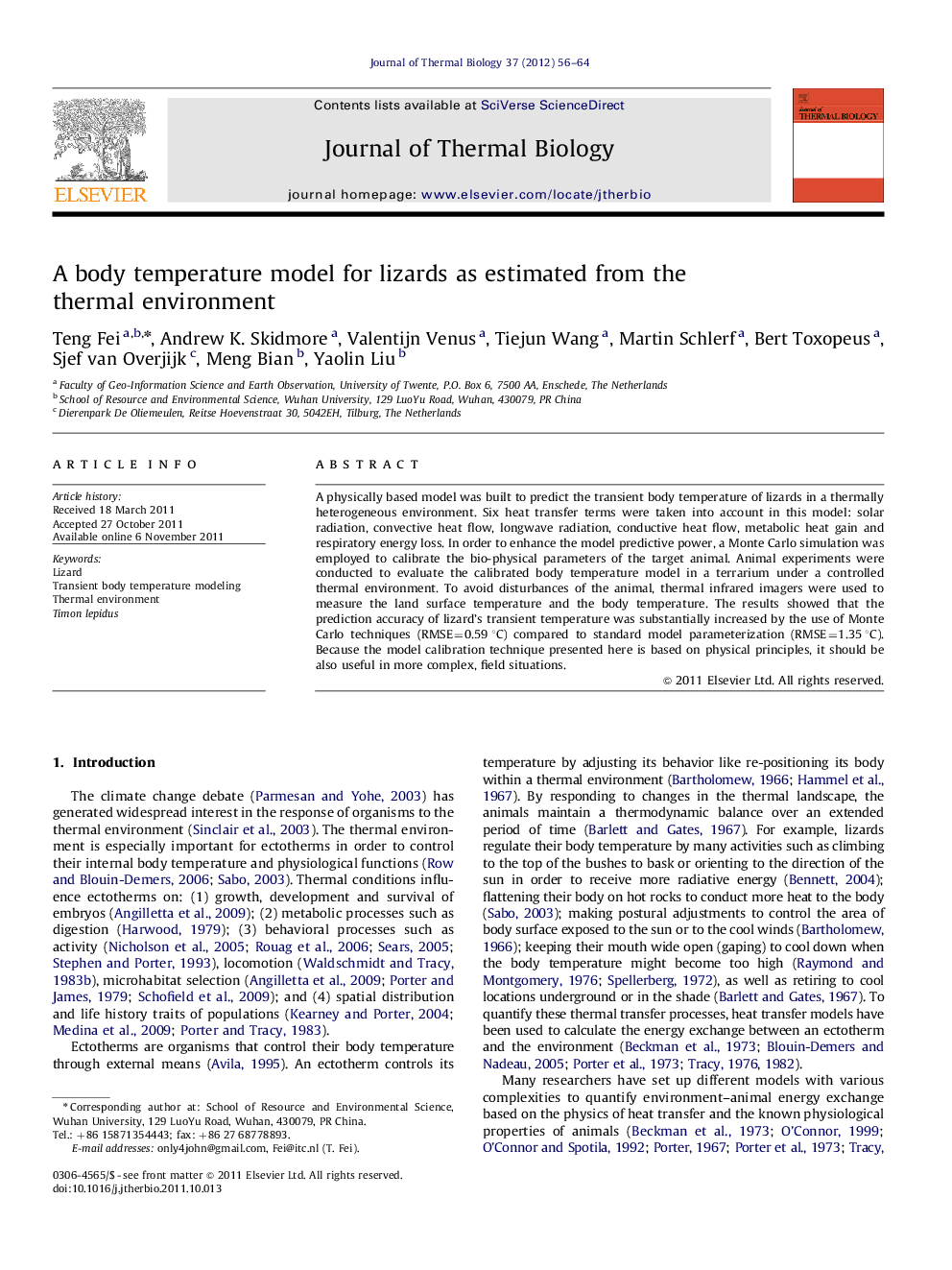| Article ID | Journal | Published Year | Pages | File Type |
|---|---|---|---|---|
| 2843210 | Journal of Thermal Biology | 2012 | 9 Pages |
A physically based model was built to predict the transient body temperature of lizards in a thermally heterogeneous environment. Six heat transfer terms were taken into account in this model: solar radiation, convective heat flow, longwave radiation, conductive heat flow, metabolic heat gain and respiratory energy loss. In order to enhance the model predictive power, a Monte Carlo simulation was employed to calibrate the bio-physical parameters of the target animal. Animal experiments were conducted to evaluate the calibrated body temperature model in a terrarium under a controlled thermal environment. To avoid disturbances of the animal, thermal infrared imagers were used to measure the land surface temperature and the body temperature. The results showed that the prediction accuracy of lizard's transient temperature was substantially increased by the use of Monte Carlo techniques (RMSE=0.59 °C) compared to standard model parameterization (RMSE=1.35 °C). Because the model calibration technique presented here is based on physical principles, it should be also useful in more complex, field situations.
► Monte Carlo techniques were used to refine a biophysical model for body temperature predictions. ► The transient temperatures of a lizard moving in a heterogeneous thermal environment were modeled. ► Lizard's transient temperatures can be predicted more accurately after the parameter optimization.
